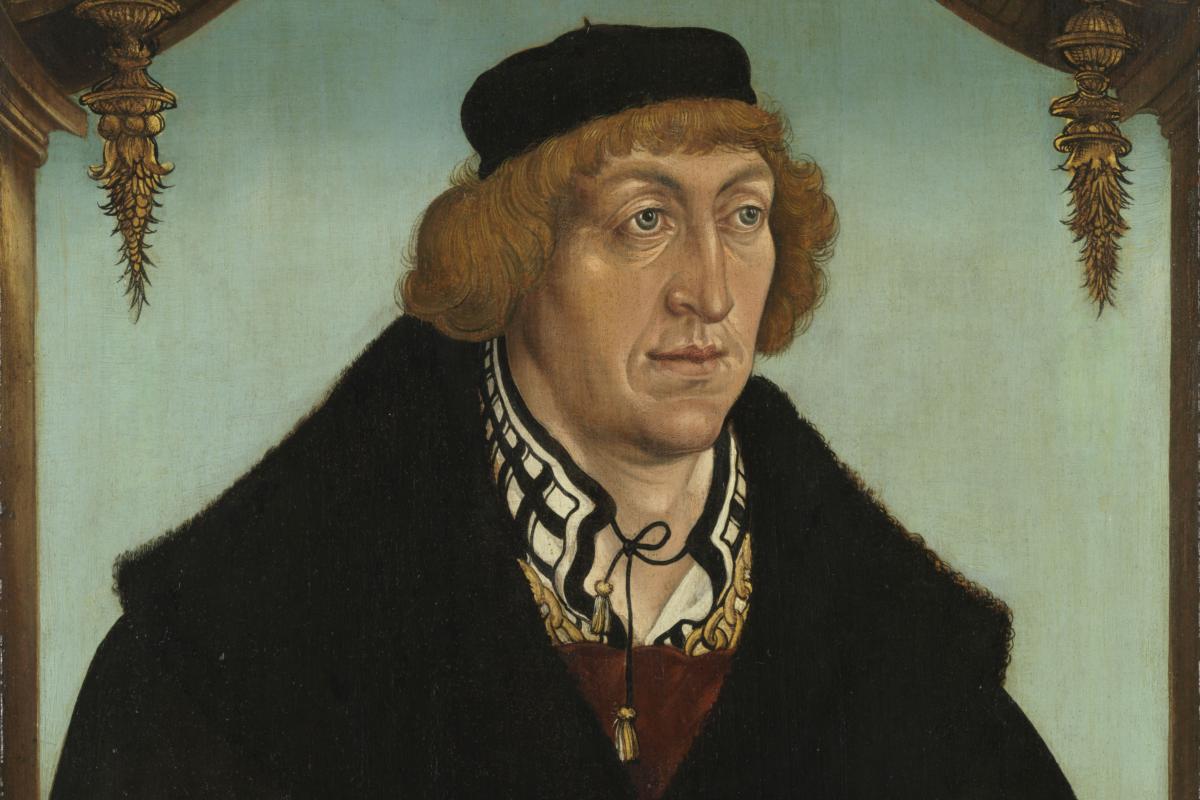The Bavarian State Painting Collections and the Bavarian National Museum have restituted a painting by Hans Wertinger (Pfalzgraf Philipp, Bischof von Freising [Count Palatine Philipp, Bishop of Freising], ca. 1515) and two wooden sculptures that originated from Nuremberg (Adam und Eva [Adam and Eve], 16th century) to the heirs of Berlin banker Jakob Goldschmidt (1882-1955). The painting entered the holdings of the Bavarian State Painting Collections in 1953 as a transfer from a former Nazi-owned art collection, while the sculptures were acquired by the Bavarian National Museum in the same year by way of an exchange.
Jakob Goldschmidt was regarded as a “key player of the financial world” in the era of the Weimar Republic. From the First World War onwards he collected art on a large scale and supported the Berlin museums. After the collapse of the Darmstädter Bank und Nationalbank (Danat-Bank) during the global economic crisis in 1931, Goldschmidt was held to be partly responsible for the subsequent banking crisis by the National Socialists since he had been an important member of the board. He was forced to emigrate to Switzerland in April 1933, and he fled from there to New York in 1936. Goldschmidt suffered considerable financial disadvantages, including being forced to pay the “Reich Flight Tax”. In 1940 he was denied German citizenship, and a year later his remaining assets in Germany were confiscated. He was initially only able to save parts of his art collection by having the items transferred abroad. The rest of the collection remained in Germany and was auctioned off in 1936 and 1938.
The painting by Hans Wertinger was purchased by Julius Streicher, NSDAP regional leader (Gauleiter) for Central Franconia, from the Frankfurt auction house Hugo Helbing in 1936, when some 300 works from the Goldschmidt collection were auctioned off anonymously as “works of art belonging to a Berlin collector”. These also included the sculptures, though the latter were not sold. After the end of the war, American forces recovered the painting from the house of Julius Streicher’s brother Max in Deggendorf, and it was deposited at the Central Collecting Point in Munich on 2 October 1946. Since no application for restitution was made, the State of Bavaria was able to acquire ownership of the painting in 1953 based on Allied Control Council Directive No. 57 of 15 January 1948, after which it was added to the Bavarian State Painting Collections. The sculptures not sold in 1936 were put up for auction once again in 1938 by the auction house Lempertz in Cologne. The next known provenance is art dealer Johannes Hinrichsen (formerly of Berlin) in Bad Aussee, who presumably purchased them from Lempertz and sold them on to Zurich armaments manufacturer and art collector Emil Bührle. The Bavarian National Museum acquired the two sculptures from Bührle in 1953 by way of an exchange.
There is clear evidence that Goldschmidt’s financial situation deteriorated noticeably under the National Socialist regime, and he was clearly forced to accept the economic exploitation of part of his art collection. The auctions would not have taken place without the Nazi regime, so this is to be regarded as an instance of confiscation as a result of persecution.





